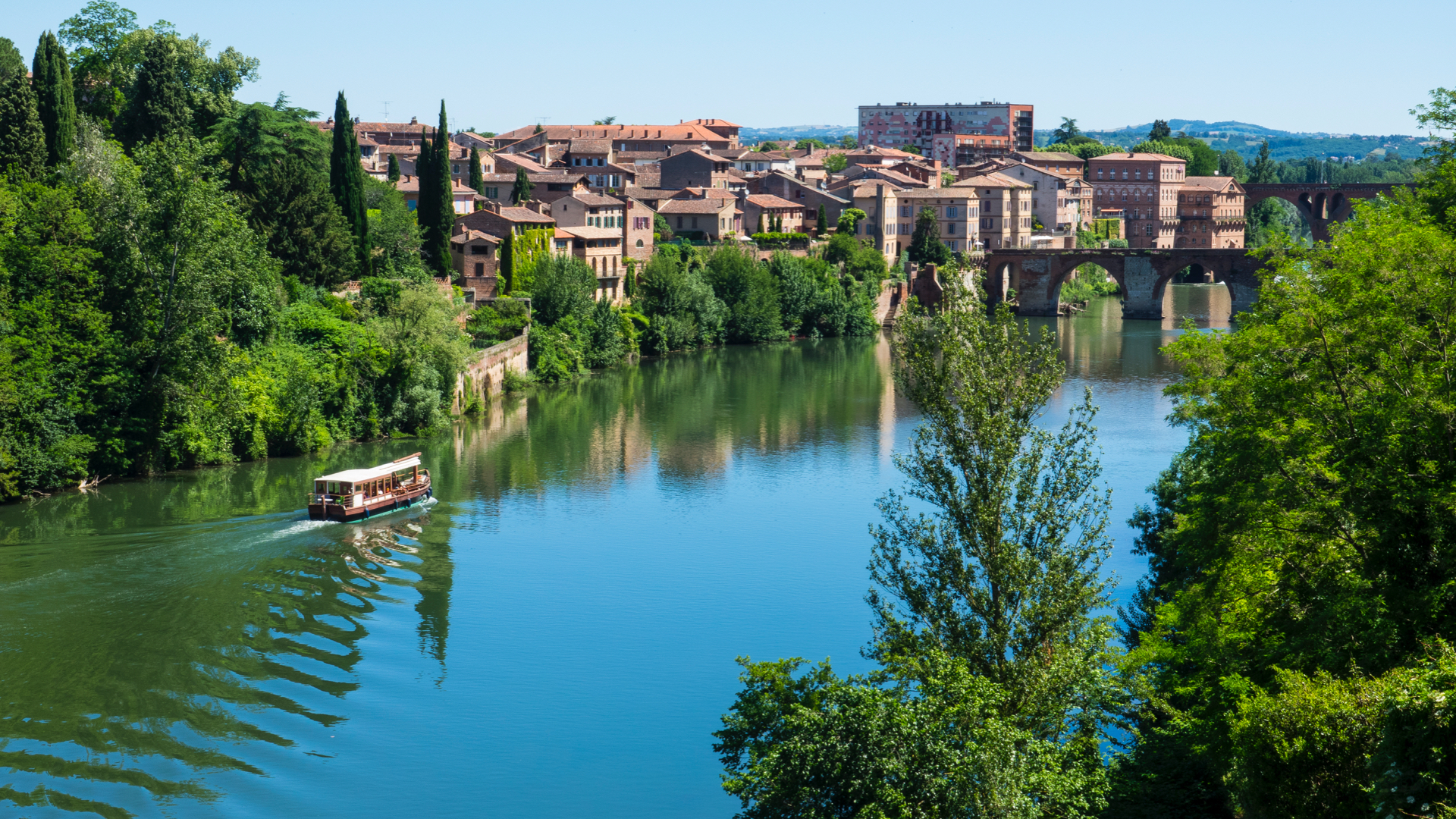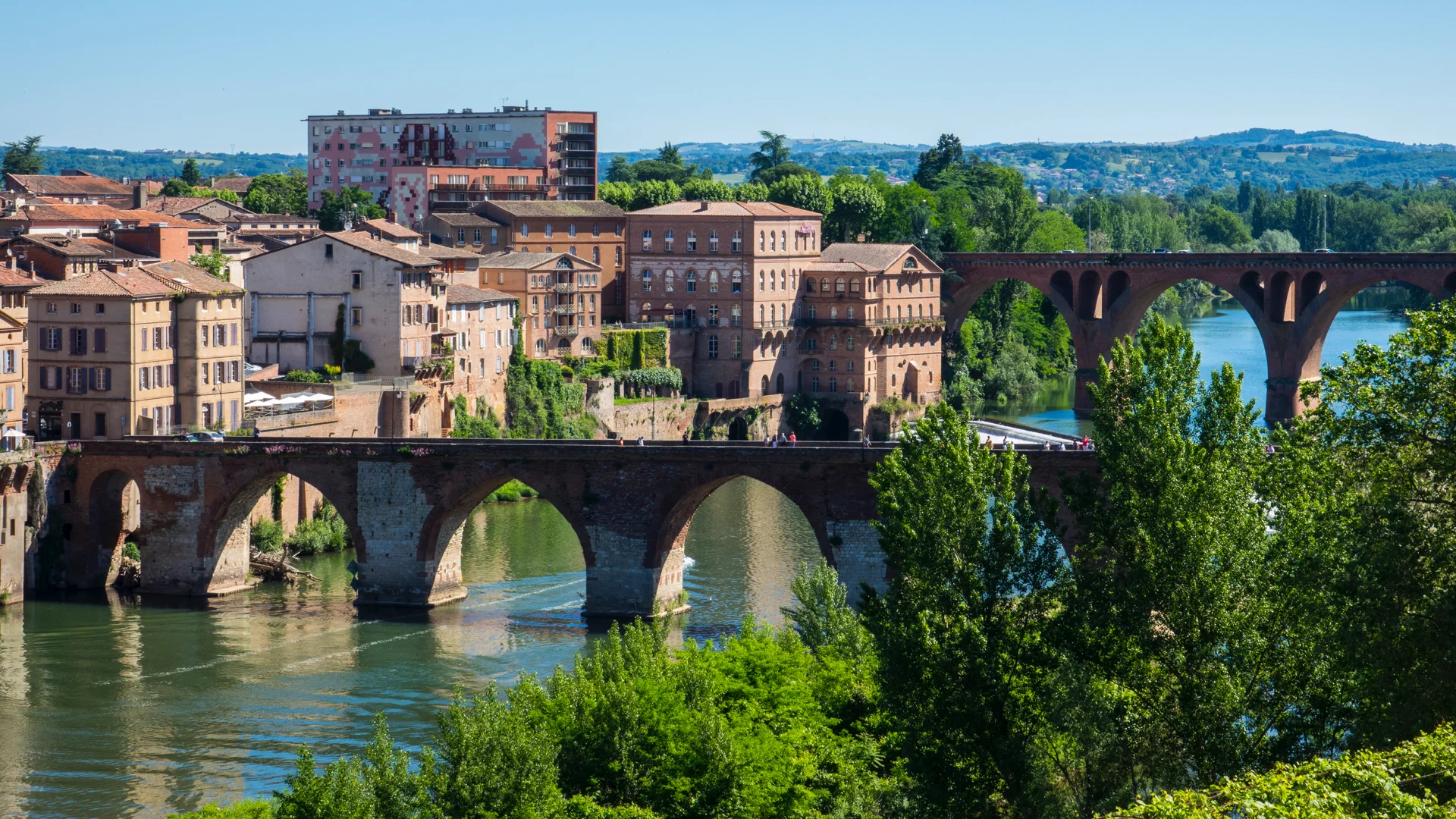I had gone straight from Charlotte North Carolina to Toulouse (didn’t seem worthwhile to fly back to Vancouver for a day…) and so I was in Toulouse a little earlier than normal for these trips. That left me with a full Sunday to explore (and adjust to the time zone), so I took a day trip to Albi, another ancient fortified town that I had been told was a nice spot to explore.
That was Sunday, but first on Saturday night I needed to go support my team, as Liverpool was playing in the Champions League final. The final was being played in Madrid, and I had been tempted to fly to Madrid first, but the logistics on that ended up being too complicated, so I settled for one of the sports bars near the hotel, and settled in for the night. It was a fun one - the atmosphere in the bar was amazing - made all the better by Liverpool coming out on top! My Leafs, Blue Jays, Whitecaps (and ultimately I’m afraid Raptors) are not lifting any hardware this year, so this was a nice one to celebrate.
The best part was the bar played “You’ll Never Walk Alone” after the game, and the whole place was singing!
Liverpool - Champions League winners for 2019!
With these trips to Toulouse, I always have a bit of a struggle with the time adjustment. So with a full day (Sunday) ahead of me, I decided to find a relatively close place to go visit. Wandering always forces you to stay awake. The weather this week in Toulouse was projected to be hot (~30C), so that was a factor as well. Some input from co-workers lead me to decide on the small city of Albi, about an hour’s train ride away from Toulouse.
A first view of the massive cathedral.
You can’t really get a sense of scale - of how big it is!
I arrived in Albi around 10:30, and spent the first few hours just walking around the old city. It was about a 15 minute walk from the train station into the old town, and the huge cathedral made it pretty easy to find. Here are some of the highlights from around the city.
Albi was built around the original cathedral and episcopal group of buildings. Red brick and tiles are the main feature of most of the edifices. Among the buildings of the town is the Sainte Cécile cathedral, a masterpiece of the Southern Gothic style, built between the 13th and 15th centuries. It is characterized by a strong contrast between its austere, defensive exterior and its sumptuous interior decoration. Built as a statement of the Christian faith this gigantic brick structure was embellished over the centuries: the Dominique de Florence Doorway, the 78 m high bell tower, the Baldaquin over the entrance (1515–1540). It is decorated with a magnificent group of polychrome statuary carved by artists from the Burgundian workshops of Cluny and comprising over 200 statues, which have retained their original colours.

The Old Bridge (Pont Vieux) is still in use after almost a millennium. Originally built in stone (in 1035), then clad with brick, it rests on eight arches and is 151 m long. In the 14th century, it was fortified and reinforced with a drawbridge, and houses were built on the piers. As I was walking over the bridge, I noticed that there were a ton of fish in the river. Seemed weird, and some of them were huge!
One of the huge catfish you could see from the bridge.
A nice view of the old bridge.
The Palais de la Berbie, formerly the Bishops' Palace of Albi, now the Toulouse-Lautrec Museum, is one of the oldest and best-preserved castles in France. This imposing fortress was completed at the end of the 13th century. Its name comes from the Occitan word Bisbia, meaning Bishops' Palace.
The Toulouse-Lautrec Museum houses more than 1000 works, including the 31 famous posters. You may know them, and not realize that you do - his Moulin Rouge (and other) posters get co-opted for various purposes in popular culture.
This body of work forms the largest public collection in the world devoted to Henri de Toulouse-Lautrec who was born in Albi in 1864.I walked around the open, outdoor part of the museum first. The grounds are beautiful, and it gives you some great views over the river, looking back to the various bridges that span the water.
Initially, I didn’t go into the cathedral or the museum. One of the strange things about France (in addition to stores being closed on Sundays) is that everything closes for lunch from 12-2. That includes the museums. So after I had finished wandering, it was of course, just after noon.
One of my first stops was at the market in the center of the old town. Covered, it had all sorts of food stalls and lots of fresh fruits, veggies, meats and fish.
The view back across the river.
I did spend a couple of hours walking across the bridges, and exploring other aspects of the town. Especially along the river, the views were quite nice. It was great to see all of the old buildings, built over narrow, winding streets that have probably been there hundreds or even thousands of years.






This ended up being one of my favourite shots.
Eventually I came back and wandered through the deserted shopping streets, but did find a very cool cloister that was open. It was a very pretty little spot, out of the way.
Inside the cloisters.
The whole area was very serene and calm.
One last view back before heading out through a covered passage. That was pretty cool too.
Resigned to wait until 2:00, I had a leisurely lunch with a half bottle of rose - such a hardship.
Once 2:00 rolled around, I went first to the cathedral. Imposing on the outside, it’s equally ornate on the inside. While I am not at all religious, I do appreciate the craftsmanship, skill and artistry that went into cathedrals and churches at the time. This one was no exception. That said, I didn’t stay too long.
The very ornate, gothic entrance.
While the outside was quite plain, the inside was anything but.




After the cathedral, I went over to the Toulouse-Lautrec Museum. I think the building is actually more interesting and worth seeing than the art collection, but that’s just me. While I was passingly familiar with Henri de Toulouse-Lautrec, I wouldn’t rank him among my favorite artists of the period.
Looking back at the cathedral from the museum.
Still, there were some interesting things to see, and the posters were quite fascinating, as they had a good collection of works in progress, that showed the progression of his artistic process. They also did a really good job of explaining the history of the building and the surrounding region, which like I said I thought was better than the art.
Part of my walk around Albi - I didn’t record the whole thing.
By the time I was done with the two buildings, it was scorching hot outside, and I was feeling a bit fatigued. I had a beer at a cafe outside the cathedral, and checked the train times. One was coming in about 20 minutes, so I hurried to catch that and cut my day a bit shorter than I had planned. Still, it was a good outing and I enjoyed seeing the sights.
















